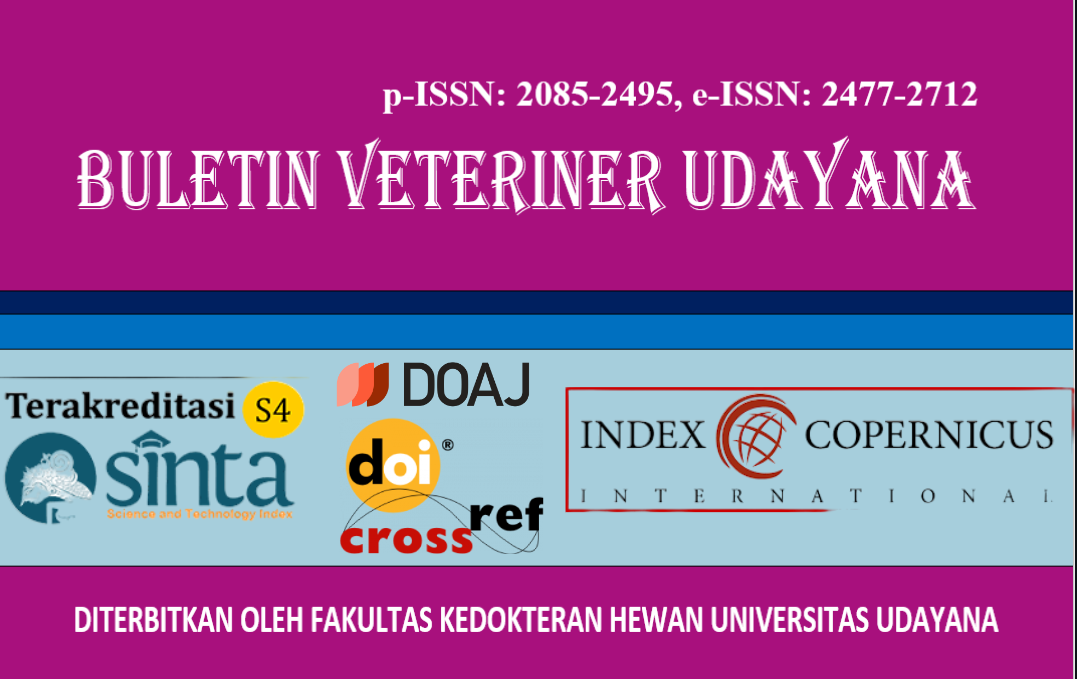COLISEPTICEMIA IN BROILER CHICKEN FARMS IN DARMASABA VILLAGE ABIANSEMAL BADUNG BALI
DOI:
https://doi.org/10.24843/bulvet.2024.v16.i06.p16Keywords:
Broiler chickens, E. coli, Colisepticemia, diagnosisAbstract
The case chicken was 27 days old taken from a close house farm in Darmasaba Village, Abiansemal District, Badung Regency, Bali. The aim of this case report is to diagnose animals using protocol 621/H/23 based on anamnestic data, clinical signs, epidemiology, anatomical pathological changes, histopathological changes, and laboratory examination. Clinical signs include a thin body, weakness, white and reddish stools, paralysis, hair loss and dullness, and a bloated abdomen. Anatomical pathology examination revealed pathognomic lesions of Escherchia coli infection which were characterized by the presence of fibrin membranes in the lungs, heart and liver. Histopathological examination revealed necrosis, inflammatory cell infiltration, hemorrhage, congestion in the liver, heart, lungs, intestines and brain. Bacteriological examination, Nurtien Agar media culture resulted in white (opaque) colonies, smooth surface, round shape and uneven colony growth. In EMBA media culture, metallic green colonies were obtained in samples of the heart, liver, lungs and intestines. Gram staining was found to be Gram negative and the catalase test results were positive (+). Biochemical test results on TSIA were positive (+), Citrate (-) Indol (+) Motlity (+), Simmon Citrate Agar negative, Methyl Red (+), Voges Proskauer (-), and glucose test (+). Qualitative stool examination using the native method found Eimeria tenela oocysts. Quantitative examination using the Mc Master method found 11,100 cysts/gram of feces. Based on the results of anamnesis, clinical signs, epidemiology, anatomical pathology from necropsy results and agent identification, it can be concluded that the case chicken with protocol number 621/N/23 was diagnosed with Colisepticemia. Farmers need to pay attention to implementing cage hygiene and sanitation to avoid disease transmission.




